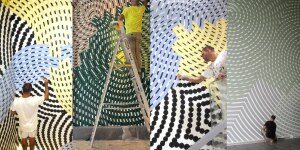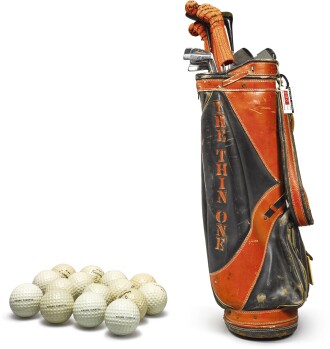F ew names are more synonymous with Palm Springs than Frank Sinatra. However, few realize the extent to which the illustrious Hoboken-born performer was embedded in the desert community. Whether hosting golf tournaments, parties or fundraisers, Barbara and Frank Sinatra left a glamorous and philanthropic legacy in the Coachella Valley. In his second feature-length film Sinatra in Palm Springs, which debuted earlier in 2018, fellow Rancho Mirage resident Leo Zahn interviews longtime Palm Springs locals, from restaurant and hotel owners to socialite neighbors, who share little-known insights about the Sinatras. “Sinatra, or Mr. S, as he liked to be called, considered Palm Springs his town. Hollywood and Beverly Hills were for the industry, but here, he could get away from it all,” the director told Sotheby’s. Along with Palm Springs icon Nelda Linsk who also appears in the documentary, Zahn recently spoke at a Sotheby’s Los Angeles event where property from the upcoming auction of Barbara and Frank’s collection (6 December | New York) was on view. Ahead, Zahn shares how style, architecture and celebrity combined to make Palm Springs a world-famous destination.
Sinatra in Palm Springs - Official Trailer
What inspired you to make Sinatra in Palm Springs?
I moved from LA to the desert in 2010. Sinatra pops up everywhere in Palm Springs, and you always run into people who claim to have known him. In 2015 for the centennial of Sinatra’s birth, HBO ran a two-part, four-hour documentary. What struck me was the fact that Palm Springs was mentioned so briefly, essentially just regarding when JFK was supposed to visit Sinatra’s home in 1962. I realized there was a real opportunity to make a film about Sinatra’s life in Palm Springs because most people are not aware that this was his primary home since about 1947.
How would you describe the appeal of Palm Springs when Sinatra first moved there?
After World War Two, Palm Springs was a small village with roughly 5,000 year-round residents. Many stars had weekend homes here and would come in the winter. But Sinatra was a true desert rat who liked to be here year round. And like he told his friend Tom Dreesen who is interviewed in the film, he just wanted to get away from all the Hollywood BS. He felt comfortable in Palm Springs. He had his favorite spots, and he made friends with the locals.
Do you feel that stars still look at the Coachella Valley as an escape? How has the region evolved in terms of its global recognition?
In the 1940s through 1960s, there was somewhat of an unwritten rule that the paparazzi and gossip columnists should stay away from Palm Springs. In the 1970s and 1980s Santa Barbara became a major refuge, and of course Las Vegas. In the 1980s Palm Springs went through a slump. House flippers from LA and San Francisco bought up a lot of the sharply devalued real estate. The era of party houses began. Then the emphasis shifted dramatically in the mid-1990s when it was rediscovered for its architecture. That became a major draw for people all over the world. It wasn’t a celebrity town from then on, but there’s still a lot in Palm Springs that harkens back to the old days.























